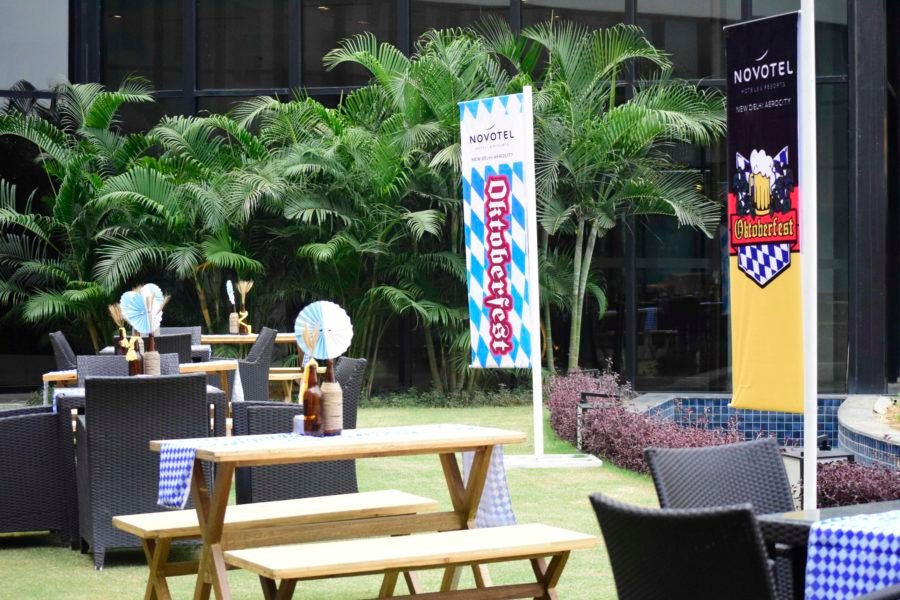How do you define Delhi? You may call it a boombastic mix of the old world charms and the upcoming hip trends, or maybe a medley of emotions that have been breathing and nurturing in the bosom of ever-increasing chaos. There maybe a thousand definitions and perspectives, the thing that stays the same is the spirit with which this city lives and survives each passing day. This spirit is given a caress and nurturing touch of life not just by the city’s monuments and their enriching history, but also with the people who live here, and others who wishes to leave an imprint upon it’s soul. We came across a few of such inspiring people, the street artists who gave the city a whole different look with their artwork. Check out their recent work at Lodhi Art District as part of St+art Delhi 2016- a street art festival.
1. Niels Shoe Meulman
Shoe is a visual artist born, raised and based in Amsterdam. He being a writer at heart combined his love for words and everything visual in the form of a new art form called Calligraffiti starting in the year 2007. This revolutionising artistic movement brings together calligraphy and grafitti to create something different and new. For this artwork in Lodhi Colony, Shoe chose a self-written poem, while combining bright colours and natural elements getting inspired from the traditional Indian brooms made from grass available at any street corner shop in India.
2. Anpu Varkey
A Delhi-based street artist, Varkey started working as a street artist while she lived in Bremen, Germany. The artists with whom she shared a studio were the inspiration to start out- before, she had worked on large canvases. She moved to Delhi 4 years back, and started exploring the local art scene- this led her to participate in and organize many street art festivals, the first being in Khirki Extension. With this art work called ‘Lava Tree’ in Lodhi Colony, Varkey is pushing her boundaries as an artist and exploring the newer art forms. The tree resembles the flow of lava consuming the entire building, shadowing the menace within.
3. Harsh Raman
An urban visual artist and a graphic designer, Harsh is the creative director for a multimedia company called Harkat Studios. Taking inspiration from Dadaism, Surrealism and Comic Books, he also touches upon many socio-political issues through his street art and murals. The purpose behind his art he says, is that it is meant for no one, but everyone. This particular artwork at Lodhi Colony by him is titled ‘Katha-Crazy Twins: Chiller Champa and Boom Bhaijaan’. Here, he employs the ‘use of no words’ in the ancient Indian dance form of Kathakalli and merges it with the expressive form of art, the one you see on the streets. The elements that both these art forms amalgamate are the older generation living in the Lodhi quarters with the young generation of today.
4. Suiko
A Japanese artist, Suiko started gaining interest in the graffiti art form when he was still in High School. As soon as he graduated, he created his first artistic piece on the street walls. The most striking features in his every artwork is the use of lettering, bold colours and bubbling shapes. While he does so, he tries to make the piece as vivid and dynamic as possible. Other than graffiti, he loves to experiment with sculpting, where also can be found his signature use of vivacious colours and shapes. Suiko, who is always exploring newer ways to write his name, keeps this element constant in all of his compositions. In this artwork called ‘Stop and Stare’ at Lodhi Colony, he brings together his use of characters and curved lines with the national flower of India, Lotus. To lend this piece a final refined touch, he incorporates the tones and colours of the colony.
5. Borondo
Born in a small town in Spain called Valladolid, Gonzalo Borondo is a street artist whose work is known to be loosely based in the classical painting techniques, something unusual in the world of street art. At the age of 14, he moved to Madrid to attend the Art School and the Academy of Fine Arts. and started to do graffiti tags all over the city. In this artwork, Borondo creates a transcendental architectural piece, which depicts something that is synonymous to the birth of a child. The wall being opposite to a maternity hospital, the concept of life and birth beautifully fits into the framework of this astonishing artwork. The arch and tree in the centre represents the origin of birth and the river the flow of life as it is.
Images courtesy of Upasana Malik








